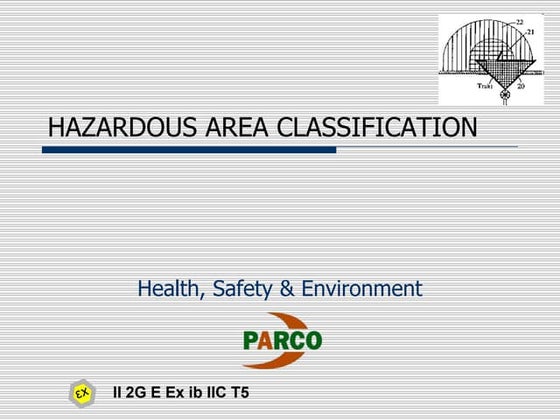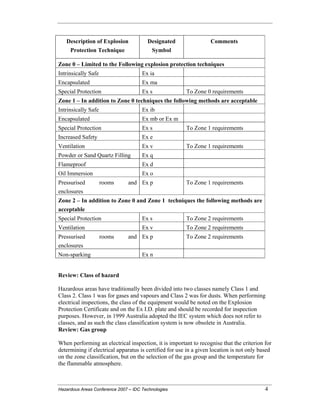Getting My Roar Solutions To Work
Getting My Roar Solutions To Work
Blog Article
Roar Solutions Fundamentals Explained
Table of ContentsThe Basic Principles Of Roar Solutions Rumored Buzz on Roar SolutionsThe Greatest Guide To Roar Solutions
In such an ambience a fire or surge is feasible when three fundamental problems are fulfilled. This is frequently described as the "dangerous location" or "combustion" triangular. In order to safeguard setups from a possible explosion a method of analysing and identifying a potentially unsafe area is needed. The function of this is to make sure the correct choice and installment of equipment to eventually protect against a surge and to make sure security of life.
(https://blogfreely.net/roarsolutions/k2jcmwhm4p)
No equipment ought to be mounted where the surface area temperature level of the tools is higher than the ignition temperature of the given threat. Below are some typical dust unsafe and their minimum ignition temperature. Coal Dirt 380C 225C Polythene 420C (melts) Methyl Cellulose 420C 320C Starch 460C 435C Flour 490C 340C Sugar 490C 460C Grain Dust 510C 300C Phenolic Material 530C > 450C Aluminium 590C > 450C PVC 700C > 450C Soot 810C 570C The likelihood of the risk being present in a focus high sufficient to create an ignition will differ from place to location.
In order to identify this threat an installment is split into areas of threat depending upon the quantity of time the harmful is existing. These areas are described as Zones. For gases and vapours and dusts and fibers there are 3 areas. Area 0 Area 20 An unsafe environment is highly most likely to be existing and might be present for lengthy periods of time (> 1000 hours per year) and even constantly Area 1 Zone 21 A hazardous environment is feasible however not likely to be present for lengthy periods of time (> 10 450 C [842 F] A category of T6 means the minimum ignition temperature level is > 85 C [185 F] Hazardous location electrical devices perhaps designed for use in greater ambient temperatures. This would indicated on the ranking plate e.g. EExe II C T3 Ta + 60C( This means at 60C ambient T3 will not be surpassed) T1 T1, T2, T3, T4, T5, T6 T2 T2, T3, T4, T5, T6 T3 T3, T4, T5, T6 T4 T4, T5, T6 T5 T5, T6 T6 T6 A T Course rating of T1 indicates the optimum surface temperature level created by the tool at 40 C is 450 C. Thinking the connected T Course and Temperature ranking for the devices are suitable for the area, you can always utilize an instrument with a much more strict Department score than needed for the location. There isn't a clear response to this concern however. It actually does rely on the type of equipment and what repair work require to be accomplished. Equipment with certain examination procedures that can't be performed in the field in order to achieve/maintain 3rd event rating. Must return to the factory if it is before the equipment's solution. Field Fixing By Authorised Worker: Complex testing might not be required nonetheless details procedures might require to be complied with in order for the tools to keep its 3rd party score. Authorised employees must be employed to execute the job appropriately Repair service need to be a like for like substitute. New component should be considered as a direct substitute requiring no unique testing of the devices after the repair is complete. Each piece of tools with a dangerous rating ought to be reviewed independently. These are outlined at a high degree listed below, however, for more comprehensive details, please refer straight to the standards.
The Buzz on Roar Solutions
The equipment register is a thorough database of devices records that consists of a minimum set of fields to recognize each product's place, technical criteria, Ex-spouse category, age, and environmental information. This information is important for tracking and managing the devices successfully within hazardous locations. On the other hand, for periodic or RBI tasting assessments, the quality will be a combination of Detailed and Close inspections. The ratio of Comprehensive to Close inspections will be identified by the Equipment Danger, which is assessed based upon ignition threat (the probability of a source of ignition versus the likelihood of a combustible environment )and the unsafe location category
( Zone 0, 1, or 2). This variant will certainly additionally influence the resourcing needs for job preparation. Once Great deals are defined, you can create sampling strategies based upon the sample size of each Great deal, which describes the number of random equipment products to be examined. To figure out the required sample dimension, two elements need to be evaluated: the dimension of the Great deal and the classification of inspection, which shows the level of effort that should be applied( reduced, regular, or raised )to the evaluation of the Whole lot. By incorporating the classification of evaluation with the Great deal size, you can after that establish the ideal rejection standards for a sample, indicating the allowed variety of malfunctioning things discovered within that example. For more information on this procedure, please describe the Power Institute Guidelines. The IEC 60079 standard recommends that the optimum period in between evaluations need to not exceed three years. EEHA inspections will certainly likewise be performed outside of RBI projects as component of scheduled maintenance and equipment overhauls or repairs. These evaluations can be attributed towards the RBI sample sizes within the influenced Great deals. EEHA examinations are performed to determine faults in electrical devices. A weighted scoring system is crucial, as a solitary tool may have numerous mistakes, each with differing degrees of ignition threat. If the combined score of both assessments is much less than twice the fault score, the Whole lot is deemed appropriate. If the Great deal is still considered undesirable, it should undertake a complete inspection or justification, which may activate stricter examination procedures. Accepted Great deal: The sources of any kind of faults are determined. If a typical failure setting is found, added tools might require maintenance. Faults are categorized by intensity( Security, Stability, Housekeeping ), guaranteeing that immediate concerns are assessed and dealt with immediately to reduce any influence on safety and security or operations. The EEHA data source should track and record the lifecycle of mistakes together with the rehabilitative actions taken. Executing a robust Risk-Based Inspection( RBI )technique is critical for making sure compliance and security in handling Electrical Tools in Hazardous Areas( EEHA) (electrical refresher course). Automated Fault Scoring and Lifecycle Monitoring: Easily take care of mistakes and track their lifecycle to enhance assessment precision. The introduction of this assistance for risk-based examination further reinforces Inspectivity's placement as a best-in-class solution for regulatory compliance, as well as for any asset-centric assessment usage instance. If you are interested in finding out more, we welcome you to ask for a presentation and discover how our remedy can transform your EEHA management procedures.
The 9-Minute Rule for Roar Solutions

In terms of eruptive threat, an unsafe area is an environment in which an eruptive atmosphere exists (or might be anticipated to be present) in amounts that call for special safety measures for the building, installation and use equipment. hazardous area course. In this post we check out the the original source challenges dealt with in the office, the threat control actions, and the needed expertises to function securely
It issues of modern-day life that we make, keep or take care of a variety of gases or fluids that are regarded flammable, and a series of dirts that are considered combustible. These compounds can, in specific problems, form eruptive environments and these can have significant and unfortunate repercussions. The majority of us are familiar with the fire triangle eliminate any kind of one of the three elements and the fire can not happen, yet what does this mean in the context of dangerous locations? When breaking this down into its most basic terms it is essentially: a combination of a particular quantity of launch or leakage of a specific compound or material, combining with ambient oxygen, and the existence of a source of ignition.
In most instances, we can do little about the degrees of oxygen in the air, yet we can have significant influence on sources of ignition, for instance electric tools. Harmful locations are recorded on the unsafe location classification illustration and are identified on-site by the triangular "EX LOVER" sign. Below, among other essential info, areas are divided right into three kinds depending upon the threat, the probability and period that an explosive atmosphere will certainly exist; Zone 0 or 20 is considered one of the most unsafe and Zone 2 or 22 is deemed the least.
Report this page